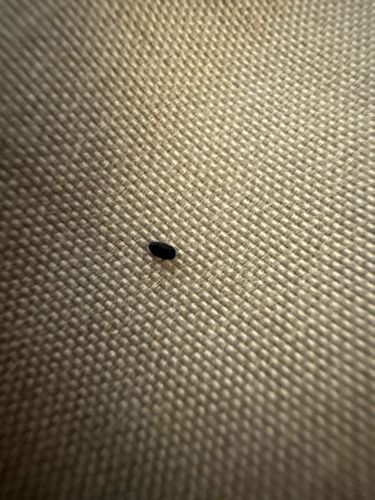Carpet Beetle (larva)
Scientific Name: Dermestidae (various genera and species, e.g., Anthrenus, Trogoderma, Attagenus)
Order & Family: Order: Coleoptera, Family: Dermestidae
Size: Larvae typically range from 2 mm to 5 mm (0.08 to 0.2 inches) in length. Adult carpet beetles are usually 1 mm to 4 mm (0.04 to 0.16 inches) long.

Natural Habitat
Indoors, larvae are found in closets, attics, rugs, carpets, upholstered furniture, rarely used clothing, and dark corners where lint and pet hair accumulate. Outdoors, they can be found in bird nests, animal carcasses, and dried plant matter.
Diet & Feeding
The larvae feed on a wide variety of animal-based products including wool, silk, fur, feathers, leather, pet hair, dead insects, museum specimens, and sometimes even plant-based materials like grains and spices if animal products are scarce. Adult carpet beetles feed on pollen and nectar.
Behavior Patterns
Carpet beetle larvae are typically found in dark, undisturbed areas. They are known for their slow movement and a tendency to curl up or play dead when disturbed. Adults are attracted to light and often found near windows.
Risks & Benefits
Risks: Carpet beetle larvae can cause significant damage to household items made of natural fibers, such as carpets, clothing, and upholstered furniture. They can also infest stored food products. Some people may experience allergic reactions to their shed skins or hairs. Benefits: In nature, they play a role as scavengers, breaking down organic matter. They are sometimes used in museums for cleaning skeletons.
Identified on: 8/21/2025